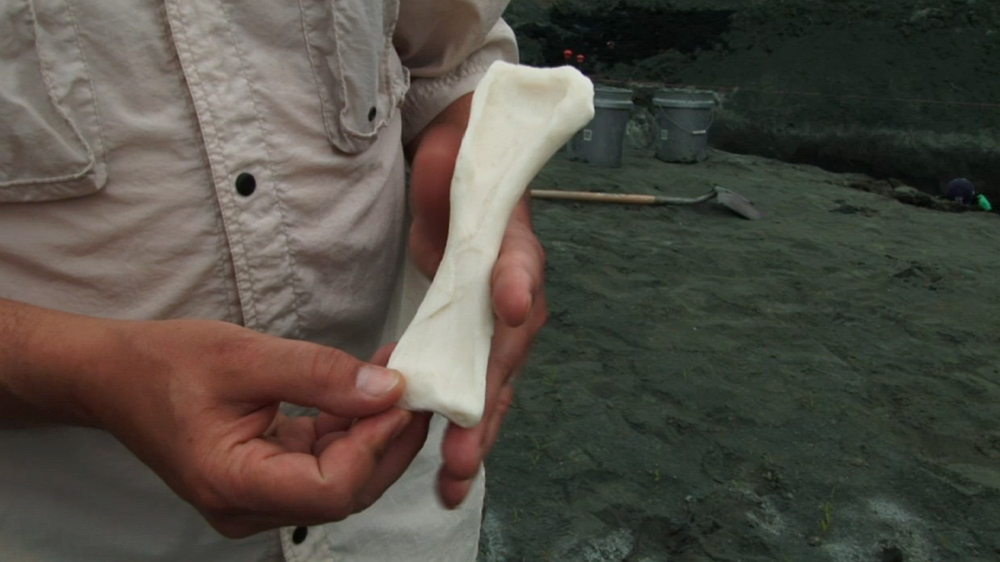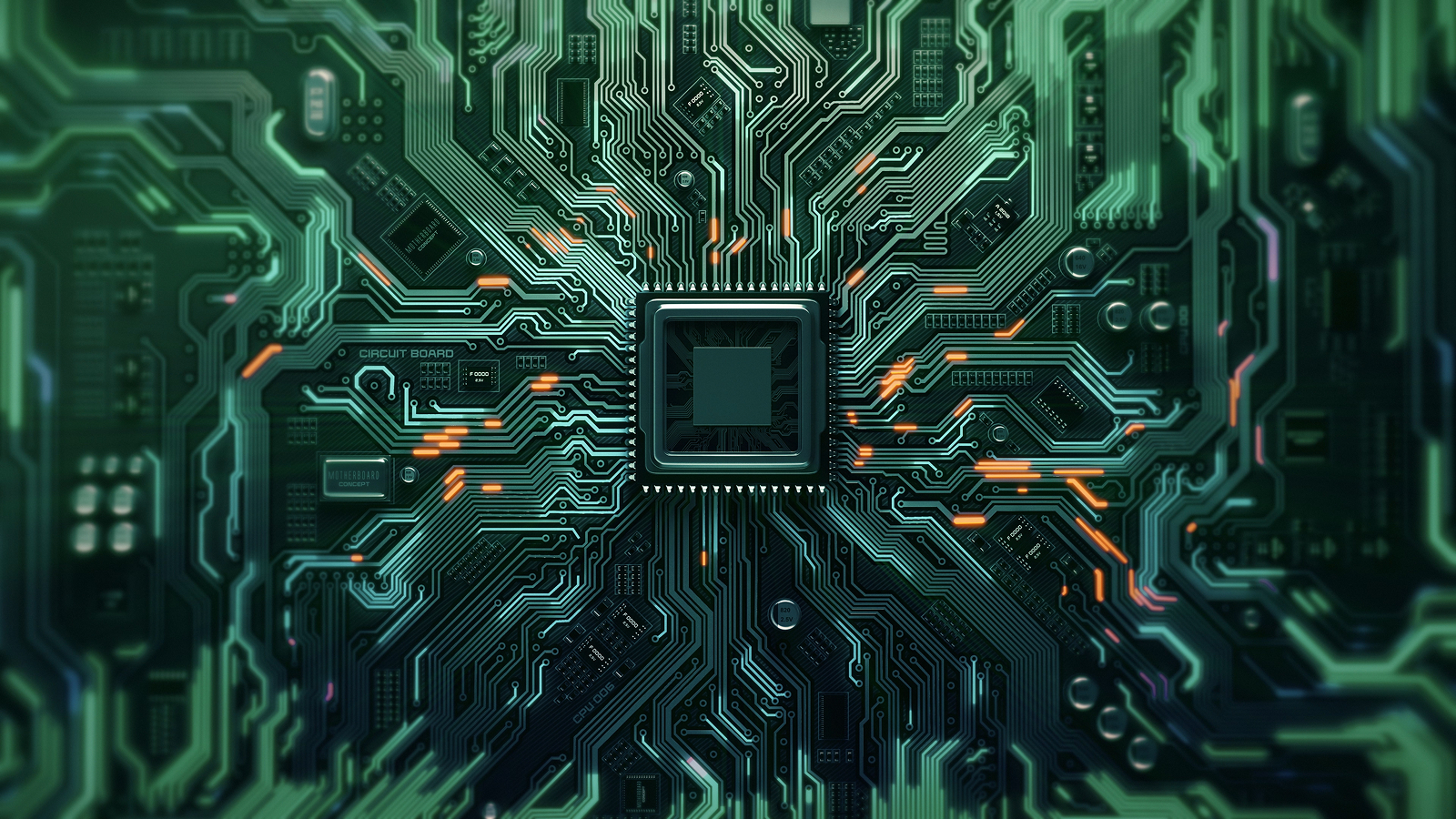Robot Dinosaurs Printed in 3-D Using Fossil Templates

MANTUA TOWNSHIP, NEW JERSEY – A hobbyist found the first nearly complete dinosaur skeleton in New Jersey in 1858, during the era of gentlemen scientists, gas lamps and extremely ruffled skirts. A century and a half later, paleontologists are still working in one dig in the southern portion of the state. Kenneth Lacovara, a paleontologist at Drexel University in Philadelphia, inherited the site from generations of paleontologists before him.
Some of Lacovara's plans for what he finds here, however, are entirely new. Over the past few years, he has started a few projects using the latest technology for paleontology. His latest plans include making robotic dinosaurs using a 3D printer.
"I guess I've always had a penchant for adopting the latest technologies when they're available," he told InnovationNewsDaily.
The dig site looks at once unearthly and a little like a homely marsh. A former mine, it is a huge bowl dug deep into the earth. Everything in the bowl is made of wet, black sand: walls, floor and hills of sand piled around the floor. Rivulets of iron-stained water cut through the bottom of the depression. A population of marsh grasses grows around an iron-red pond at one end of the bowl.
Many time periods are represented here. There is the reminder of the Victorian era, the heyday of New Jersey paleontology. There are the oysters, fish, turtles, crocodiles and swimming komodo dragons called mosasaurs that once lived in an ocean here approximately 65 million years ago. And there is a hint of the future, as some of Lacovara's high-tech methods are likely to become a usual part of paleontology practice in the future, outside experts say.
Digital databases for fossils
Laser scanners, 3D printers and digital databases are just beginning to gain traction among paleontologists. Most haven’t used a 3D printer, but everyone knows someone who has, said Daniel Fisher, a paleontologist at the University of Michigan who uses laser scanning and 3D printing.
Get the world’s most fascinating discoveries delivered straight to your inbox.
"I think that is changing rapidly," he said. "As a new generation of students come along, many of them have been exposed somehow to this. Since people are more aware of it, they will begin to use it." [10 Incredible 3-D Printed Products]
Lacovara's lab in Philadelphia is an example. He is proud that students he mentors will be comfortable with the new technology he has purchased for the lab and calls himself old-fashioned compared with them. The day before InnovationNewsDaily visited the New Jersey dig, we watched Athena Patel, an undergraduate studying biology, scan a fossilized fish skull using a laser Lacovara acquired this past March.
The laser swept over the surface of the skull, gathering millions of data points and sending them to a laptop, where a 3D model of the fossil showed up on-screen. This was one of several scans Patel took. Any single sweep misses some areas of the skull, and so, in between scans, she used a computer program to line up multiple scans to get a complete picture of the fossil.
Later, she used another computer program to reshape the skull, which flattened during fossilization. "So we can get a nice 3D view of what it looked like, instead of this fish pancake here," Lacovara explained.
Since they've gotten their own laser scanner and don't have to borrow another lab's equipment anymore, Lacovara wants to scan every important fossil he has. He wants to build a digital version of the floor-to-ceiling drawer units and bubble wrap-lined shelves in his lab, which are filled with original specimens he and his students dug up from Patagonia and New Jersey. It'll be a fossil collection that will never degrade over time or misplace specimens. "You'd be surprised how many times specimens are lost in museums," Lacovara said.
Fisher, along with paleontologists from the University of California at Berkeley and the Canadian Museum of Nature, told InnovationNewsDaily about how helpful digitized fossil collections are; all three institutions are creating them. With 3D digital data, scientists who want to study a fossil held in another lab overseas won't need to travel to do so. Two paleontologists anywhere around the world will be able to look at the same fossil at the same time and collaborate on analyzing it. Scientists can fix distorted fossils, such as the "fish pancake" Patel scanned, or create animations from them, which the Canadian Museum of Nature does for its displays.
Laser scanning will likely become as common as microscopes in paleontology labs, Fisher said. "Probably the day will come when most labs have access to have a high-quality digitizer," he said.
Perhaps future paleontologists will have to provide hyperlinks to digitized versions of their fossils with every paper they publish, Lacovara said. That will improve the scientific process of verifying others' results, he said.
3D printed dino-bones
One of the most exciting uses for digital data is that scientists are able to send them to 3D printers and then print them into plastic replicas of the real deal. Researchers can then work with the facsimiles, storing the originals to preserve them in better condition. As for Lacovara, he said he wants to use the printouts to build dinosaur robots and study how the animals moved.
Just down the block from the biology building where Lacovara has his lab, engineer James Tangorra's lab houses a 3D printer, fish robots in varying states of disassembly and a tank of water the size of a coffee table. Tangorra studies how to mimic the natural, efficient movement of animals in robots. He's working on creating robotic muscles to attach to Lacovara’s 3D printed bones. When he's ready, he'll print the bones in his lab, too. [Leaping Lizards! Tail Helps Robot Keep Balance]
One of the first robots Tangorra and Lacovara will make together is the limb of a sauropod, one of the family of large plant-eaters that includes Apatosaurs, popularly known as Brontosaurs. They will scale the limb: In the same way that people can scale down PDFs, Lacovara is able to reduce the digital data from a laser scan to just 2 or 3 percent of the original size. Otherwise, a full-size sauropod limb is impossible even for him and a team of students to lift.
Lacovara will piece together the limb bones in different configurations, looking for the most energy-efficient design. In a way, he'll be replicating evolution, he said, by trying out different mutations and seeing which works best. Scientists think the most efficient skeletal arrangement will be the real one the animal had when it was alive, he explained, because an herbivore that tipped the scales at 60 tons likely saved all the energy it could. "They're going to pay more dearly for inefficiencies than, say, you or I would," he said. As it was, a sauropod probably had to eat about a ton of leaves a day to meet its energy needs.
Scientists can also perform such efficiency studies entirely on a computer, using a program to manipulate the 3D data from a laser scan. Often, this method works well and there is no need to print out bones, Fisher said. Most scientists in the future may use this method because 3D printing will probably remain too time-consuming and expensive, he predicted.
The advantage of getting a printout is that no program precisely replicates all the math and physics of the real world, Lacovara said. A program may leave out variables the programmer didn't think of, but there's no danger of that in the real world. There may even be forces acting on skeletons that no scientist knows about, "but they're still there in the system because that's the way the real world works," he said.
Besides locomotion studies, paleontology could use 3D printing in other ways as well, Lacovara and Fisher said. For example, it could help scientists fill in bones that are missing from their fossils. During InnovationNewsDaily's visit, Lacovara pulled out one of his lab drawers to reveal a fossilized sea turtle shell from New Jersey, the first specimen he ever laser scanned. The shell was nearly perfect, except for one major missing plate, or rib, on the turtle's left side. Yet the right-side rib was there. Lacovara said he could take the laser-scanned 3D data about the right rib and invert it on a computer to create the digital plans for 3D printout of the left rib.
Before 3D scanning, such inversions would be difficult to perform. The paleontologist would have to create the mold for the missing rib by hand, so he or she would need to be an accurate artist, Fisher said. On the other hand, a computer program can create a perfect inversion with a click.
3D printers could also make tabletop teaching models or museum displays. "Remember, they can print in color, too," Lacovara said, which means a 3D printed museum model could be colored to look like real bones. A paleontologist would easily be able to tell the difference, he added, but museum visitors wouldn’t.
Old-fashioned field work
Back out in New Jersey, however, all the technology was left behind as the students drove school vans to the gravel parking lot by the mining factory that owns the site, then walked through a wooded area to the dig. Once in the mud, they used many of the same tools as their Victorian predecessors: spades and shovels for moving aside the black sand hills; slotted screwdrivers and paintbrushes for finer work. A couple students talked about their love for quieter towns in Montana and upstate New York, saying they couldn't imagine living in New York City, where InnovationNewsDaily is based.
"Maybe more than other science, paleontology has a historical perspective," Lacovara said. Every paper a paleontologist writes about a particular dig or species has to talk about the history of that area or animal, Lacovara said, so paleontologists end up learning about their predecessors. "The old paleontologists really never go out of memory."
In spite of the exciting technology he has in lab, Lacovara said he likes field work best, too. When working in Patagonia, he lives in a tent for months at a time. Back home in the suburbs, he keeps chickens and bees. "You know, prospecting, the excitement of discovery and the satisfaction of seeing things emerge from the ground as you excavate," he said. "It's just good to get out here."
You can follow InnovationNewsDaily staff writer Francie Diep on Twitter @franciediep. Follow InnovationNewsDaily on Twitter @News_Innovation, or on Facebook.
 Live Science Plus
Live Science Plus





